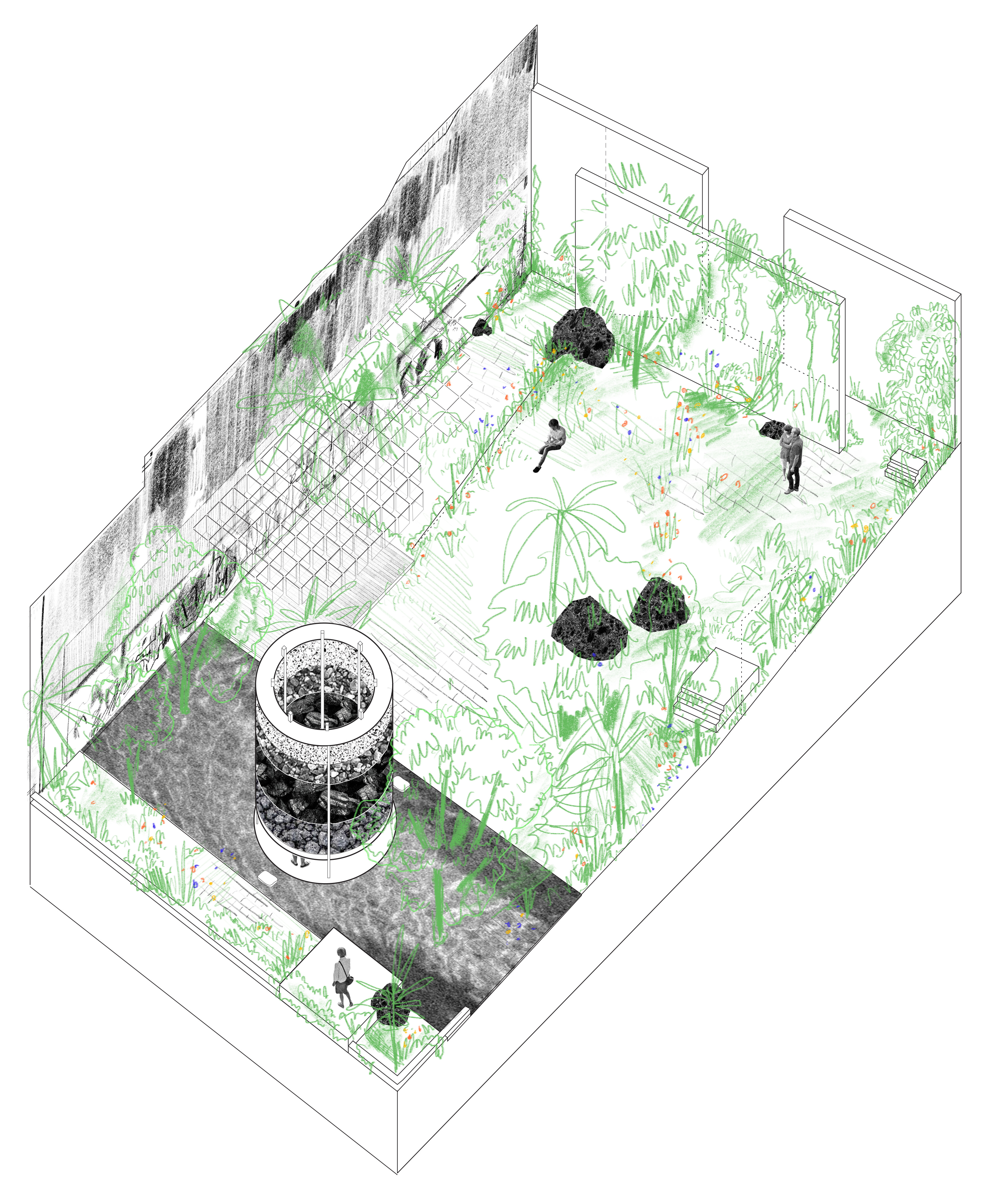GROUND, 2020
“The noble savage, a biological impossibility, never existed. The human relation to nature is vastly more subtle and ambivalent, probably for this reason. Over thousands of generations the mind evolved within a ripening culture, creating itself out of symbols, tools and genetic advantage accrued from planned modifications of the environment… They have suspended us between the two antipodal ideals of nature and machine, forest and city, the natural and the artifactual, relentlessly seeking, in the words of the geographer Yi-Fu Tuan, an equilibrium not of this world.”
(Edward O. Wilson, Biophilia)
Nature sits as an opposing force to architecture, architecture is deemed to defy time through permanence and the influence of time in nature is mostly unseen, neglected.
Nature, time, architecture. These elements share a complex relationship and through this project these relationships raised many questions around how they affect each other, and more importantly what our place - as inhabitants of architecture, beings of nature, and perceivers of time - is in this trichotomy.
As we humans move into an ever increasingly urban and fast-paced way of life we are becoming disconnected from the natural world. As we now spend approximately 85% of our lifetimes indoors, this is proving to be increasingly detrimental to both our minds and bodies, and our built environments have played a significant role in this increasing dissociation. This depositing of nature as other than us negates the importance of nature’s role as an encompassing sensory environment that rather than hindering us, has the ability to heal us.
Combined with this issue, ideas of permanence and the pausing of time in architecture became a prominent aspect of this project. Architecture is imbued with the concept of the ‘fixed end result’; as architects we design a space with a final outcome that is built and then exists in this state for as long as physically possible. Permanently, even. But could architecture have a life; experience changes, transformations, death? Could the designing of space through transformation become a process that is slower, more intuitive to the changing needs of its occupants and reflective of the world around it?
The original purpose of architecture was to shelter and provide safety from the ‘outside world’. To place a barrier between us and nature. But perhaps now architecture needs to take on a new role, that of something that will act as not a barrier but a reconciler, serving as relational space for rebuilding our connection with nature.
Nature, time, architecture. These elements share a complex relationship and through this project these relationships raised many questions around how they affect each other, and more importantly what our place - as inhabitants of architecture, beings of nature, and perceivers of time - is in this trichotomy.
As we humans move into an ever increasingly urban and fast-paced way of life we are becoming disconnected from the natural world. As we now spend approximately 85% of our lifetimes indoors, this is proving to be increasingly detrimental to both our minds and bodies, and our built environments have played a significant role in this increasing dissociation. This depositing of nature as other than us negates the importance of nature’s role as an encompassing sensory environment that rather than hindering us, has the ability to heal us.
“[built from in] the process of protecting us from climate extremes, many existing buildings also unwittingly isolate us from the environmental stimuli our bodies actually need to stay in sync with natural time”.
- unknown
Combined with this issue, ideas of permanence and the pausing of time in architecture became a prominent aspect of this project. Architecture is imbued with the concept of the ‘fixed end result’; as architects we design a space with a final outcome that is built and then exists in this state for as long as physically possible. Permanently, even. But could architecture have a life; experience changes, transformations, death? Could the designing of space through transformation become a process that is slower, more intuitive to the changing needs of its occupants and reflective of the world around it?
The original purpose of architecture was to shelter and provide safety from the ‘outside world’. To place a barrier between us and nature. But perhaps now architecture needs to take on a new role, that of something that will act as not a barrier but a reconciler, serving as relational space for rebuilding our connection with nature.








the creator:
Mika O’Brien-Ramp
is an architectural designer and illustrator currently studying at the University of Auckland. Her interests lie in the realms between architecture, sustainability, nature and food; how they affect us and likewise how we affect them.
this project [in experimental design] was done as part of stage 3 Bachelor of Architectural Studies in 2020, under the tutorage of Jeremy Treadwell.
Mika O’Brien-Ramp
is an architectural designer and illustrator currently studying at the University of Auckland. Her interests lie in the realms between architecture, sustainability, nature and food; how they affect us and likewise how we affect them.
this project [in experimental design] was done as part of stage 3 Bachelor of Architectural Studies in 2020, under the tutorage of Jeremy Treadwell.
